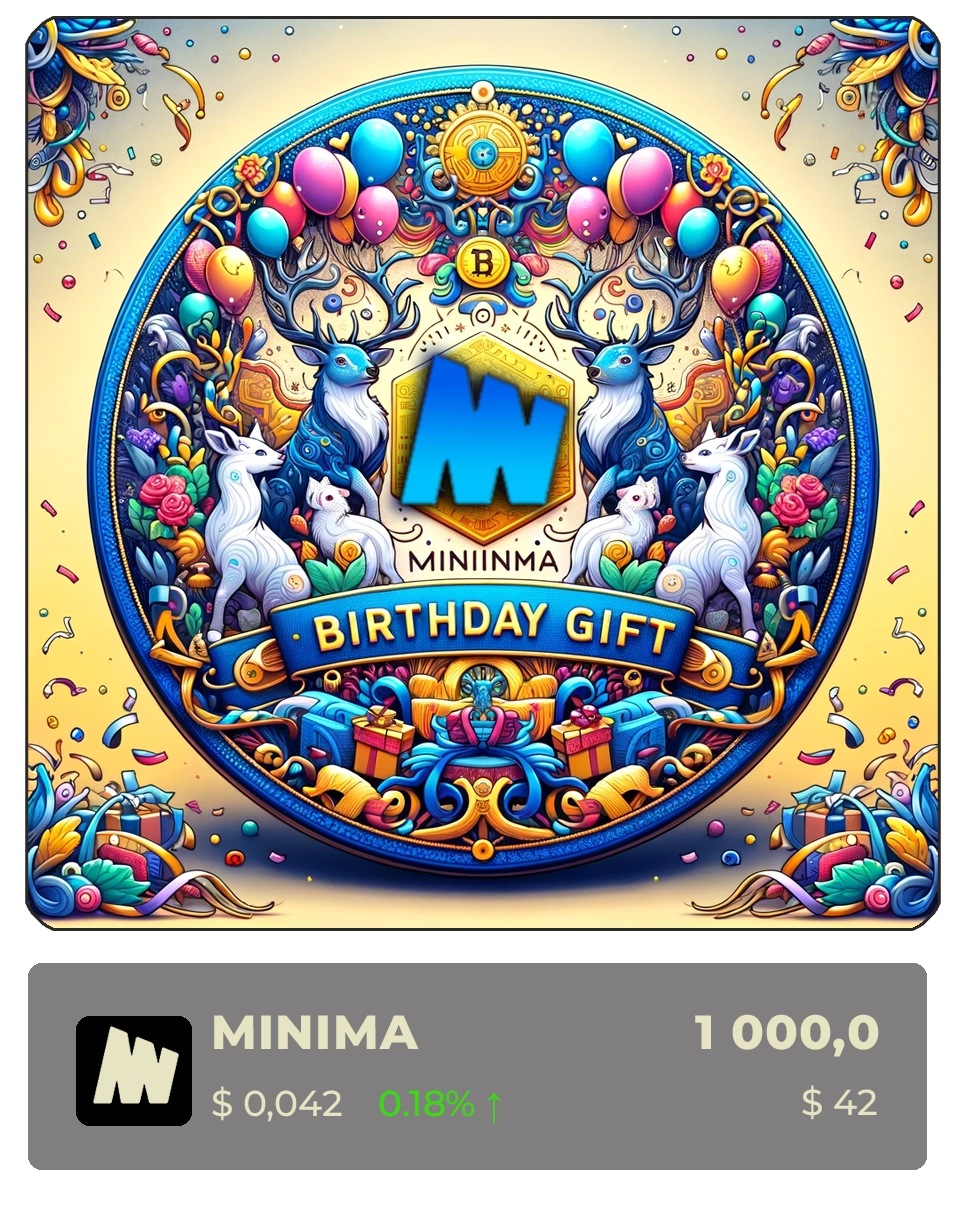I won’t bore you with excessive details.
You understand far better than I do the opportunities that arise from the use of smart contract technology. That’s why I’ve chosen to omit some of the finer points of implementation.
The example shown below illustrates what the giver sees upon landing on the "NFT as a Gift" page and the steps they need to take to complete the gifting process.
Landing page: "NFT as a Gift for a Newcomer"
Instruction message received by the recipient.

Let’s take a few easy steps, and this NFT along with the deposit will be yours.
NFT minted, gift sent, and probably already received. Two people managed to make each other happy, the Minima blockchain gained another user, the NFT creator got their cut, and the AI added a couple of megabytes of metadata. As you can see, everyone wins.
This example was chosen as the most emotional and accurately describes the attitude towards the crypto world of people who are still outside of it.
Yes, similar solutions probably exist in other blockchains, but I suggest implementing this specifically in Minima.
Interesting opportunities for cluster expansion arise with the implementation of LP tokens. This will add a savings feature, allowing users to create long-term gifts with growing value.
Undoubtedly, vast prospects open up for the implementation of the "NFT Gift" cluster — from airdrops and engaging marketing campaigns to customer loyalty programs and other inspiring initiatives.
Even greater prospects unfold with the use of such NFTs for transferring tokenized objects and data. The truly spectacular story will begin when the Minima chip can optimize the data collected from the devices it's installed on. But that's a story for later...
We need to develop methodologies and script libraries. This will simplify integration for developers and programmers from the Web 2.0 world, who are currently running away from terms like "smart contract" and "executable script" as if they were the plague. Convenient tools should become a bridge between familiar technologies and the future of Web 3.0.
I specifically made the presentation as short as possible to avoid wasting your time, while ensuring that you would actually read it.